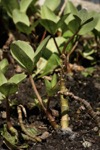Notice (8): Undefined index: geoplugin_countryCode [APP/Controller/AppController.php, line 94]Code Context$Country_code = '';if($ip_data && $ip_data['geoplugin_countryCode'] != null) {$Country_code = $ip_data['geoplugin_countryCode'];$client = null $forward = null $remote = '216.73.216.170' $ip = '216.73.216.170' $ch = unknown $ip_data_in = '{ "geoplugin_status":429, "geoplugin_message": "Blacklisted due to sending too many requests to geoplugin.net. Consider whitelisting your IP or domain", "geoplugin_url": "https://www.geoplugin.com/premium/" } ' $ip_data = [ 'geoplugin_status' => '429', 'geoplugin_message' => 'Blacklisted due to sending too many requests to geoplugin.net. Consider whitelisting your IP or domain', 'geoplugin_url' => 'https://www.geoplugin.com/premium/' ] $Country_code = ''App\Controller\AppController::initialize() - APP/Controller/AppController.php, line 94 App\Controller\ProductsController::initialize() - APP/Controller/ProductsController.php, line 31 Cake\Controller\Controller::__construct() - CORE/src/Controller/Controller.php, line 273 ReflectionClass::newInstance() - [internal], line ?? Cake\Http\ControllerFactory::create() - CORE/src/Http/ControllerFactory.php, line 47 Cake\Http\ActionDispatcher::dispatch() - CORE/src/Http/ActionDispatcher.php, line 91 Cake\Http\BaseApplication::__invoke() - CORE/src/Http/BaseApplication.php, line 235 Cake\Http\Runner::__invoke() - CORE/src/Http/Runner.php, line 65 Cake\Http\Runner::__invoke() - CORE/src/Http/Runner.php, line 65 Cake\Http\Middleware\CsrfProtectionMiddleware::__invoke() - CORE/src/Http/Middleware/CsrfProtectionMiddleware.php, line 108 Cake\Http\Runner::__invoke() - CORE/src/Http/Runner.php, line 65 Cake\Http\Runner::run() - CORE/src/Http/Runner.php, line 51 Cake\Routing\Middleware\RoutingMiddleware::__invoke() - CORE/src/Routing/Middleware/RoutingMiddleware.php, line 168 Cake\Http\Runner::__invoke() - CORE/src/Http/Runner.php, line 65 Cake\Routing\Middleware\AssetMiddleware::__invoke() - CORE/src/Routing/Middleware/AssetMiddleware.php, line 88 Cake\Http\Runner::__invoke() - CORE/src/Http/Runner.php, line 65 Cake\Error\Middleware\ErrorHandlerMiddleware::__invoke() - CORE/src/Error/Middleware/ErrorHandlerMiddleware.php, line 96
| Scientific: | Menyanthes trifoliata |
|---|---|
| Other: | Bogbean |
| Family: | Buckbean |
Bogbean or buckbean grows in shallow water in ponds, lakes and bogs in both North America and Europe. The rhizome and leaves contain secoiridoids and iridoids that are primarily respnosbile for it's bitter taste. Historically it was used stimulate digestion to improve apetitie and relieve indigestion as well as treat liver and gallbladder diseases. It possess some antiinflammatory properies making it usefful for arthritis and other rheumatic diseases.
Gastrointestinal
• atonic digestive complaints
• dyspepsia
• hypochlorhydria
• pancreatic insufficiency
• colic
• gastroparesis
• gastric esophageal reflux disease (GERD)†
Hepatobiliary
• biliary insufficiency
• cholestasis
• cholelithiasis (gallstones)
• jaundice
• biliary dyskinesia
Musculoskeletal
• arthritis
• rheumatic disease
• Bitter
• Stomachic
• Hepatic
• Cholagogue
• Choleretic
• Sialogogue
• Antimicrobial
• Antiinflammatory
• Antirheumatic
• Laxative (Mild)
• Emmenagogue
• Emetic (High dose )
• SecoIridoid (Sweroside) & Iridoid (Loganin)
• Penolic acids (caffeic acid, ferulic acid)
• Triterpenoids (23-O-trans-feruloylcylicodiscic acid )
• Infusion (dried leaf): 1-2 tsp/cup tid before meals
• Tincture (1:5 in 45% EtOH): 1-4 ml tid before meals
Contraindications: Pregnancy and lactation (uterine stimulant).
†Caution: Gastritis, hiatal hernia, peptic ulcers. May aggravate as bitters increase gastric secretions; however, may also benefit patients with GERD where LES tone is the cause, not hyperacidity. Discontinue use if if pain is burning in epigastric region.
Note: Concomitant ingestion of demulcent herbs can help prevent an aggravation.
Barnes J, Anderson LA, Phillipson JD. Herbal Medicines, 3rd ed. London: Pharmaceutical Press, 2007.
Bone K. Principles and Practice of Phytotherapy. Edinburgh: Churchill Livingstone, 2000.
Bone K. A Clinical Guide to Blending Liquid Herbs: Herbal Formulations for the Individual Patient. St Louis, MO: Churchill Livingstone, 2003.
Brinker F. The Toxicology of Botanical Medicines, 3rd ed. Sandy, Oregon: Eclectic Medical Publications, 2000.
Felter HW, Lloyd JU. King's American Dispensatory. 1898. http://www.ibiblio.org/herbmed/eclectic/kings/main.html. Accessed: August 19, 2006.
Hoffman D. Medical Herbalism. Rochester, Vermont: Healing Arts Press, 2003.
Weiss RF. Herbal Medicine. Beaconsfield, England: Beaconsfield Publishers Ltd, 1988.
Williamson EM, ed. Major Herbs of Ayurveda. Edinburgh: Churchill Livingstone, 2002
Disclaimer: This content is subject to change. The information is intended to inform and educate; it does not replace the medical evaluation, advice, diagnosis or treatment by a healthcare professional. www.nhpassist.com © 2014 NDAssist Inc. and/or its affiliates. All rights reserved.

|
Bogbean
SummaryBogbean or buckbean grows in shallow water in ponds, lakes and bogs in both North America and Europe. The rhizome and leaves contain secoiridoids and iridoids that are primarily respnosbile for it's bitter taste. Historically it was used stimulate digestion to improve apetitie and relieve indigestion as well as treat liver and gallbladder diseases. It possess some antiinflammatory properies making it usefful for arthritis and other rheumatic diseases. IndicationsSign in requiredActionsSign in requiredConstituentsSign in requiredPosologySign in requiredSafetySign in requiredReferencesSign in required |
|---|